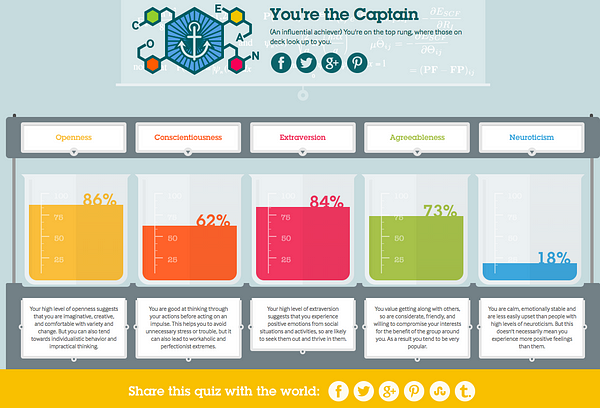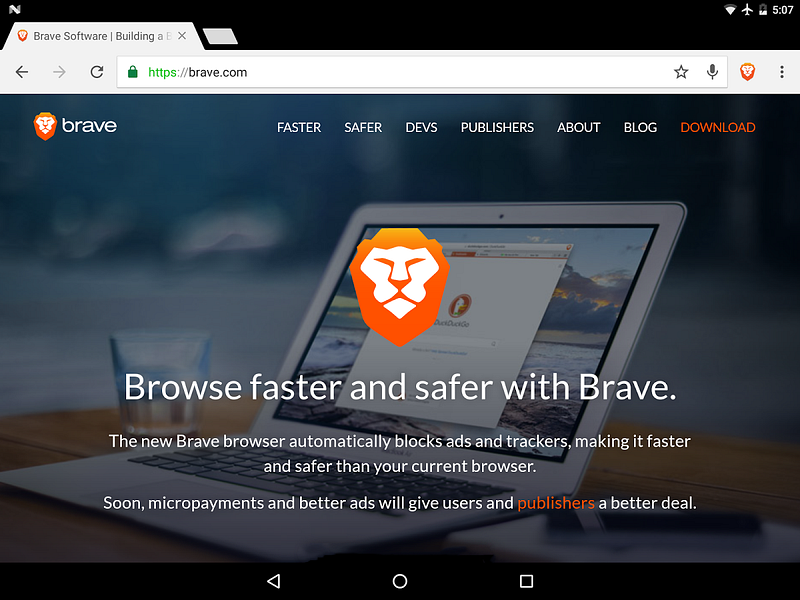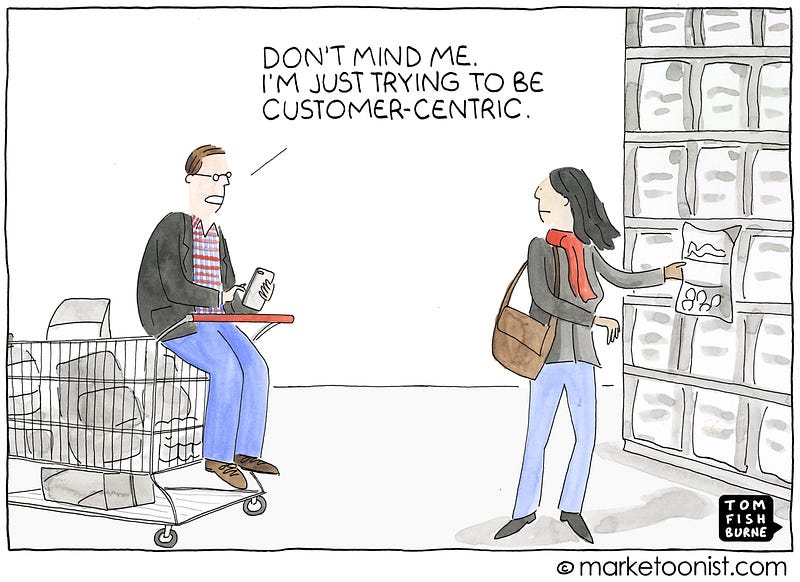Trust&Privacy: Battle of the Browsers
24 Jul 2018

Recently Google helpfully reminded the world that you can, in fact, opt out of targeted advertising. However, the catch is immediately obvious:
If you turn off personalisation, we will still bombard you, you will have no specific control over the content, and any relevance to you will be coincidental.

The search engine giant then went on to tell you how easy it is to see exactly how many companies are using algorithms to follow you around on the internet. Fascinatingly, the list contains nothing like what I expected. Instead of Tescos and Dominos (no judgement here), a total of 115 companies were on the list, the selection below doesn’t even include all of the A’s:

So you don’t have to, I went digging into what it is that these companies actually do. Almost invariably the answer is data collection and profiling. Vision DNA (right down at the bottom of the list) goes so far as to lead you straight to a ‘quantified self’ quiz module, enriching what the ghost in the machine has already collected and, no doubt, sold.


The problem is transparent, your average punter (myself included) knows absolutely nothing about how much explicit and implicit information about them is collected. Manually putting data into a form is only the beginning. It could be managed with a daily purge of cookies, as a start, but this is labour intensive by the standards of the convenience economy.
The conflict between convenience and privacy is hotting up, and consumers are fleeing from the bombardment of endless adverts. The click of those Louis Vuitton heels is haunting their dreams, and they see that Tesla car everywhere they go. As they seek solace in new offers, the browsing sector is fragmenting and monopolies are breaking up.
“Freedom! Justice! Truth! Reasonably priced love! And a hard boiled egg!”â—âThe People’s Republic of Treacle Mine Road
So in the case of the data privacy revolution, what can users reasonably expect? They want Facebook to remember their password, they want one-touch PayPal, and they want to be able to use Google for free. Which mechanisms will allow them to insist on security, when lethargy governs their on-demand desires, and the freemium economy forces brands to rely on advertising revenue? In the rest of this article we will look at where consumers are heading, and how brands can stay ahead of the curve.
Key Trend: Take ownership of your data (in the laziest way possible).
Users want to be able to browse for free, but they don’t necessarily want a browser to remember every advert they’ve ever clicked on, and regurgitate the content back to them. That fancy dress party was months ago, and every zombie Ronald McDonald costume since reminds them of the amount of screaming a 6 year old can really produce.
For consumers, the easiest option is to choose a browser, or else develop browsing habits, that put them back in control. Ad blockers are the simplest answer, beyond that there are new browsers, or even micro servers. The goal is simple: no more cookies gathering information for free, no more side bar ads, and no more flashing banners. As a brand, developing an understanding of your consumers’ habits, supporting them in retaining control, and developing equal value exchanges for data is critical.
Consumer Option 1: Ad blockers
Ad blockers were a great thing until websites started to catch on and restrict services if a plugin was active. However, there are still some that work, we’ve recently started using Ghostery and the analytics dashboard is fascinating. You can see trackers categorised by type, block and unblock categories according to your desire to share your data, and use smart blocking to ensure essential functionalities still run.

This method allows users to block the trackers that the plugin detects, and this relieves some of the frustration of endless ads. However, as Google warned, users still see ads, just not ones that are relevant to them. It also doesn’t necessarily give individuals any more active ownership of their data, or control over its distribution.
Consumer Option 2: New browsers
Cited as the ‘Google avoidance machine’ browsers like Cliqz promise to give you the freedom to wander the internet without the risk of leaking private data. Users are no longer just blocking ads, they’re actively taking steps to contain their behavioural data and keep it out of the hands of third parties.

The browser can be downloaded in isolation or installed as an add-on within the Firefox browser. Mozilla (the parent company of Firefox) made a strategic investment in Cliqz as part of their drive to provide useful recommendations to users, rather than serving as a passive search engine.
The approach Mozilla takes to privacy is widely reassuring. They announce all testing before it launches, using No Surprises as one of their 5 data privacy principles. In the case of Cliqz, they announced that less than 1% of users in Germany would see the add on enabled out of the box.

They also note that “Cliqz does not build browsing profiles for individual users and discards the user’s IP address once the data is collected. Cliqz’s code is available for public review and a description of these techniques can be found here.” Users also retain the ability to disable or remove the add on entirely. They are informed and in control. This transparency is key in building consumer trust in testing and optimisation.
Consumer Option 3: Data Monetisation
To go a step further, not only controlling which information brands can see but actively participating in a value exchange, users can get in on the ground level of data monetisation. I’m hoping to see a number of contenders in this space, but right now Brave.com is a great example:

It operates by eliminating ads and trackers, speeding up browsing and keeping the experience uninterrupted. But how does it work? It certainly isn’t altruism, though it’s absolutely free to use, and doesn’t rely on ad revenue. They are changing the model by introducing a new cryptocurrency, Basic Attention Tokens (BAT).
BAT enables brands to pay consumers to engage with their advertising in tokens held in crypto wallets. Users who want to engage and sell their data to brands are able to, and if they want to keep it slick, that’s fine too. As ever, it’s the choice that counts.
What are the options for brands?
If you, as a brand, are not already engaging in strategic, thoughtful and equal value exchanges with your customers, then you need to get a grip and do an in depth review of your strategy. To begin with, the GDPR is forcing brands to focus on the value of each piece of data, and to justify the reasons for holding it in relation to value created for the customer. Beyond that, there is a reason the big players are changing the game, and it’s entirely customer driven.

Google’s move (remember that?) is designed to comply with the standards set by the Coalition for Better Ads. The research performed by the coalition was comprehensive, and consumer focussed. It involved more than 25,000 individuals, and identifies the ad types that correlate most closely with a user propensity to install ad blockers. The examples that fell below the threshold of consumer acceptability are included below:


Our advice is to make like Google and Mozilla, get on trend, or else face a long downturn in available customer data. If you build your data collection mechanisms in such a way that they deliver value to your customers, and maintain an open dialogue with them that builds trust, they are far less likely to block you from their lives.
If you'd like to know more, come speak to us at Adeptiv UK. We are a data-driven dialogue agency in London which specialises in helping clients get, keep and grow customer relationships at scale.

Please login to comment.
Comments